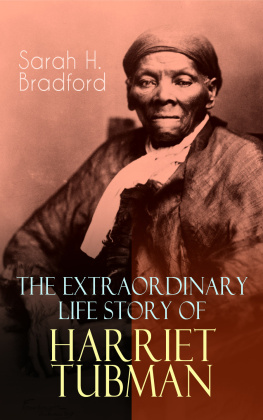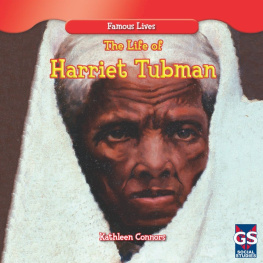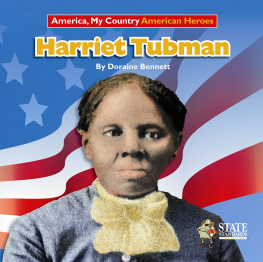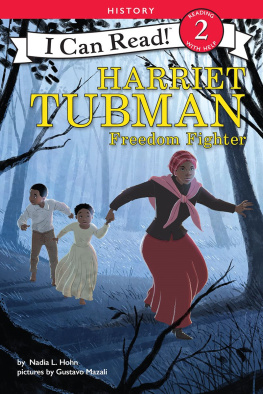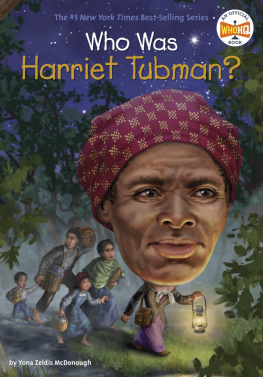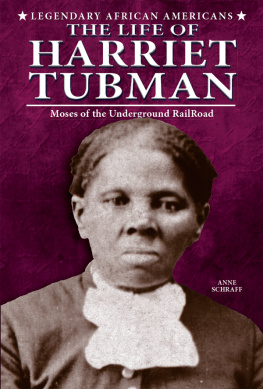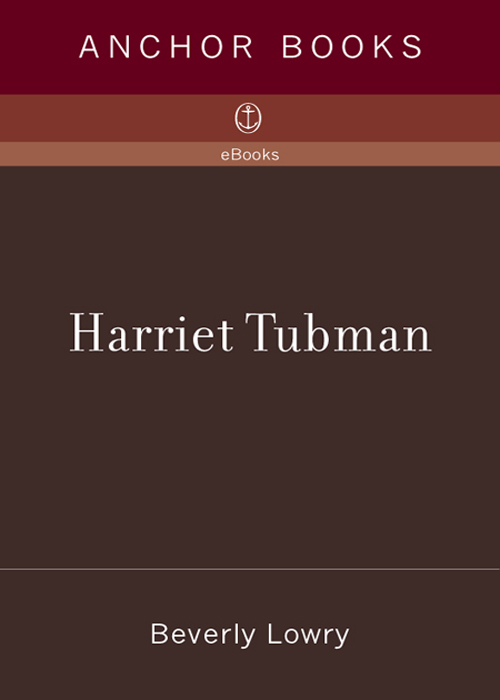
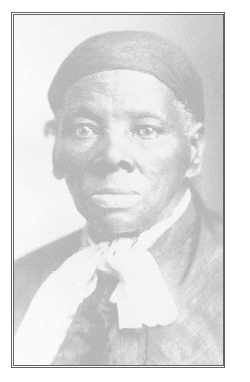
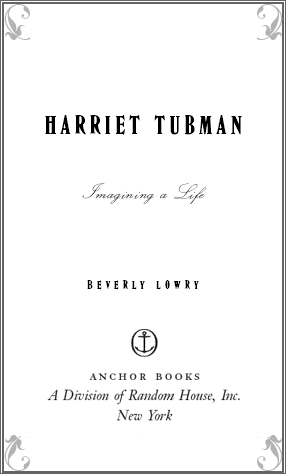
Contents

I respectfully dedicate this book to the memory of those members of the Harriet Green/Benjamin Ross family whose stories have been, so far, lost: Modesty Green and her granddaughters, the sisters Linah, Soph, and Mariah Ritty Ross, all three sold off and carried away; also Moses Ross, Angerine and her brother Ben, Mary Jane and Sarah Jolley, Harriet Manokey Ross, and perhaps others whose names have been lost to history and its retelling.
Authors Note
T his book does not pretend to be a work of intense scholarship. It is the story of a life as I have studied and reimagined it, based on documentation and previous publications and told, as best as I could, scene by scene. I have tried to emphasize the visual elements of Harriets storywhat things looked like, places and clothes, faces, plants, the skyand to thread information from the sources listed in the Selected Bibliography through the narrative as seamlessly as possible. All this in order to come up with one version of what life might have been like for the American hero Harriet Tubman.
In his introduction to his very compelling biography, M: The Man Who Became Caravaggio, Peter Robb uses a phrase I wish I had thought of myself. He wanted to tell Caravaggios story as it was lived, he wrote, using a minimum of what he called weasly qualifiers. This has been my goal, too: to tell the story plain. In some passages, I have incorporated the language of the speaker into the text without quotation marks (as in Sarah Bradfords keep it green and Gerrit Smiths badly frosted her feet), in order to depict a scene with some accuracy, as the participants may have lived through it and as they remembered it afterward.
By necessity, because Harriet never learned to read or write, what information we have comes second-or thirdhand, mediated by as told to texts. In many instances, I have included source material within the body of the narrative, to indicate not just when something happened but also in what year Harriet told the story, and to whom. One decision a writer using slave narratives has to face is whether or not to duplicate the heavy dialect of the interviewees of that time. Finding dialect distracting, difficult, and in the end, patronizing, I have decided to render Harriets stories and comments in plain English.
This act of simplification, I think, honors her great wish to exactly communicate what life was like for herself and her people, so that no detail would be lost or forgotten.
Prologue
O ur heroes come to us in flashes that fade fast. We remember the famous momentssome of them pure mythsand the visual images, which after repeated viewings become such a part of our lives, it seems we actually were there. So it often goes with the American hero Harriet Tubman. Even if you cannot say exactly who she was or precisely what she did, where she lived or when she died, you have doubtless seen her in photographs and drawings. You may even have witnessed a version of her onstage, channeled by one of her many delineatorsthat is, a woman who dresses in clothes like hers and stands there proclaiming, I am Harriet Tubman.
In 1978, a colorized 1905 photograph of her appeared on a postage stamp, the first black woman to be so honored. Her likeness is featured in history textbooks covering slavery, the Civil War, the Underground Railroad, womens history, black womens history. Visual images are endlessly engaging and we study them carefully, looking for the real her, the genuine himbeyond appearances. In Tubmans case, we are also attempting if not to capture then at least to find her, not in wet, cold Maryland December, but on the page, standing in one spot in her guerrilla-warfare garb, clutching a long-barreled rifle or seated, facing us, old now, her bony face framed by the white lace shawl said to be a gift from Queen Victoriain either case, immobilized, caught, ours.
There, we want to say, taking particular notice of her hands in the photograph with the shawl: how big they are, what pure strength in the knuckles, a mans hands. Now we have her.
Yet she escapes us. Just as she made it out of slavery, she dodges us now, however relentlessly we dog her footsteps or meticulously study what clues she left behind. We keep trying to fix in place the definitive, as biographers like to claim, Harriet Tubman. She is part of our history, after all; her life and legend contribute to ours.
She could not read, never learned to write, and so of necessity, others have acted as her scribe, each making a case for who she was, how she looked (one reporter says not one drop of white blood, while another makes a case for a white ancestor; one calls her handsome, while another says plain and toothless) and sounded, how she managed to do what she did, what it was like, how many times she made the dangerous trek back into slavery and then to the North again, how many people she brought outeighty, ninety, three hundred? In her time, some dismissed the claims altogether. How could one small, illiterate woman, an ignorant black person, do such a thing? Questions roll into one another; answers skitter away. And so we are constantly interpreting whatever we read or hear, seeing her as if through a warped glass.
The first book-length biography of her, called Scenes in the Life of Harriet Tubman, was written by Sarah Hopkins Bradford from personal interviews and published in 1869, its costs covered by local subscription. The book came illustrated with that frequently reprinted woodcut of Tubman holding the rifle and dressed in her Civil War military garb. To substantiate her subjects version of events, Bradford inserted a number of letters from abolitionists and wartime colleagues, as well as the full text of a previously published biographical article from an 1863 Boston Commonwealth, written by its editor, the abolitionist schoolmaster and editor Franklin B. Sanborn.

Cover of Scenes in the Life of Harriet Tubman by Sarah H. Bradford, published in 1869.
Sarah Bradford was a white woman, Franklin Sanborn a white man. Without question, freed slaves told white people stories they wanted to hear. But we take what we can get, and what has been given to us in Harriets case, but for one occasion late in her life, are stories told to white interviewers. There is nothing to do about this except keep it in mind. Maintaining racial vigilance, relying on backup testimony from family and friends, we compare one version of an occasion with another. Noting especially that her stories remain the same, for the most part, throughout her life, we depend on and value that consistency, backed up by whatever documentation we can come up with. And in the end, choose pretty much, even if not entirely, to take her stories at face value.
At the request of Tubmanwho spent much of her life trying to gather money enough to support herself and the many others she took care ofBradford later issued two revised versions of her book, one in 1886, the other in 1901. The 1886 edition, entitled
Next page


